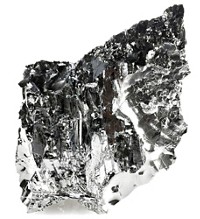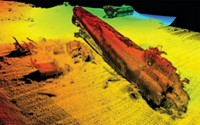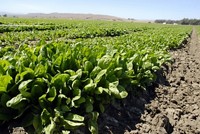Advertisement
Grab your lab coat. Let's get started
Welcome!
Welcome!
Create an account below to get 6 C&EN articles per month, receive newsletters and more - all free.
It seems this is your first time logging in online. Please enter the following information to continue.
As an ACS member you automatically get access to this site. All we need is few more details to create your reading experience.
Not you? Sign in with a different account.
Not you? Sign in with a different account.
ERROR 1
ERROR 1
ERROR 2
ERROR 2
ERROR 2
ERROR 2
ERROR 2
Password and Confirm password must match.
If you have an ACS member number, please enter it here so we can link this account to your membership. (optional)
ERROR 2
ACS values your privacy. By submitting your information, you are gaining access to C&EN and subscribing to our weekly newsletter. We use the information you provide to make your reading experience better, and we will never sell your data to third party members.
Environment
Sprinklers Reduce Arsenic In Rice
Sprinkler irrigation, compared with the usual flooding method, significantly reduces arsenic accumulation in rice
by Journal News and Community
July 23, 2012
| A version of this story appeared in
Volume 90, Issue 30
Compared with continuous flooding, watering rice fields with sprinklers results in rice contaminated with far less arsenic, according to researchers in Sardinia, Italy (Environ. Sci. Technol., DOI: 10.1021/es300636d). Rice usually grows in perpetually flooded fields. In countries in Southeast Asia where groundwater is contaminated with arsenic, the toxic metal accumulates in rice grains. Gavino Sanna of the University of Sassari and his colleagues knew that oxidation states of inorganic arsenic species vary in toxicity: As(III) compounds are more toxic than As(V) species. In floodwater, which has low oxygen content, Sanna says As(III) species are more soluble. And aerobic conditions favor the formation of As(V) species. He reasoned that aerating water via sprinkling should reduce the likelihood that arsenic—in particular the more toxic As(III)—would accumulate in rice grains. The researchers grew 37 genotypes of rice and tested the total arsenic concentrations. In rice grown in a continuously flooded field, arsenic concentrations ranged from 95 to 235 µg per kg. Arsenic levels were much lower in rice grown in sprinkled fields: between 1.3 and 5.1 µg per kg. What’s more, sprinkling required only half as much water.





Join the conversation
Contact the reporter
Submit a Letter to the Editor for publication
Engage with us on Twitter